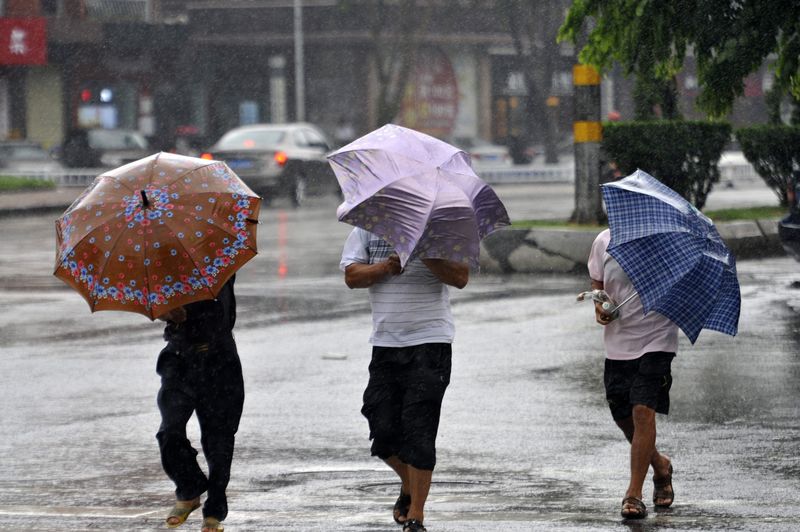(Bloomberg Opinion) -- One of the most severe floods in decades is ravaging the industrial heartland, just as China struggles to shake off the impact of Covid-19. The Yangtze River’s inundation has so far caused direct economic losses of 178.9 billion yuan ($25.7 billion), including collapsed buildings, flooded factory floors and homes and livelihoods lost for millions of people. Average rainfall for June and July surpassed previous years; fixing the damage has barely begun.
The latest disaster feeds into a picture of an uneven turnaround as China picks itself up from the pandemic. Beijing has pumped in trillions of yuan in stimulus and relief, and there are signs of upticks in activity. But it’s getting harder to say what the true state of the Chinese economy is. The numbers are all over the place. For investors buying into a cyclical rebound, it may be worth a deeper look.
Parsing through more granular data shows that heavy trucks are selling like hotcakes – up 89% last month from a year earlier. Excavator sales rose almost 30%. Demand for automation machinery has picked up, as has movement of goods across the country. Machine use hours fell 3% overall, and were flat in flood-stricken southern China. Monthly electricity generation is down, and cement inventory levels are higher than in previous years. Government spending on fixed assets is rising strongly, but industrial production and manufacturing investment are sagging.
Much of the enthusiasm for China rides on expectation alone. Hopes that Beijing will spend, ease and build its way out out of the slowdown are pushing up proxies of economic activity. Two trillion yuan ($288 billion) of additional funds, including special direct transfers of over 1.5 trillion yuan, have been committed. That’s in addition to funds that were deployed previously, including the issuance of special bonds. Yet, the reality is turning out to be harder. The floods haven’t just caused consumer prices to tick up, they’ve slowed the ability to build and manufacture – regardless of money promised toward infrastructure, roads and railways. Will buying trucks now force repair activity to restart in the second half of 2020? Unlikely. The pain will be lasting.
All this points to the recovery starting to lose steam. Though China was first in and (sort of) first out of Covid-19, consumers aren’t jumping on the bandwagon. Part of the problem is that the outbreak came on top of already sagging demand that Beijing was struggling to revive. Manufacturers and industrial firms were facing a crisis of confidence, balance sheets were constrained and a boost to direct financing wasn’t trickling through.
Now, the floods have come. Sure, the meiyu front is a seasonal affair. In certain years, like 1998 and 2016, the rains turn severe. To deal with this, China has built 98,000 reservoirs, 110,000 hydrological stations and a web of hundreds of thousands of levees. Climate change has made the deluges worse. A study on the impact of floods on the manufacturing sector over the seven years to 2010 found that firms’ output, on average, decreased by 28.3% in years of large-scale inundations, or a total of 15.4 trillion yuan loss to the economy. The study also found there was a lagged effect: In the two years following such disasters, a further 2.3% was lost, indicating the impact lingers and is larger than just the direct damage. Bringing these lessons forward to now, while freight volumes may be rising, people aren’t traveling by rail and air in droves. Returning to work has become much more challenging, especially for factory and migrant workers traversing the country.
The crises of 2020, worse than any single natural disaster, confront Beijing with a dilemma. On one hand, old-school fiscal pumping and railways to nowhere will boost short-term growth. So, domestic construction machinery manufacturers like Jiangsu Hengli Hydraulic Co. forecast production of certain excavator parts to rise by 30% this month from a year earlier, sending its stock price up over 80% this year. On the other, the top brass knows that investments in high-tech infrastructure will pay off in coming years, helping fuel the current stock market rally. The uneven turnaround stems from unclear priorities: growth, debt, or the future economy? The numbers show as much.
Underlying it all is a teetering banking system with clogged plumbing. Despite the monetary easing, direct financing is handicapped at a time the economy needs it most. State planners have tried to strike a balance. But they’ve failed to show an appetite for the pain required to let some weaker companies fail and allow real demand to emerge. Only when they demonstrate real priorities to investors can China get this recovery back above water.
This column does not necessarily reflect the opinion of the editorial board or Bloomberg LP and its owners.
Anjani Trivedi is a Bloomberg Opinion columnist covering industrial companies in Asia. She previously worked for the Wall Street Journal.
©2020 Bloomberg L.P.
